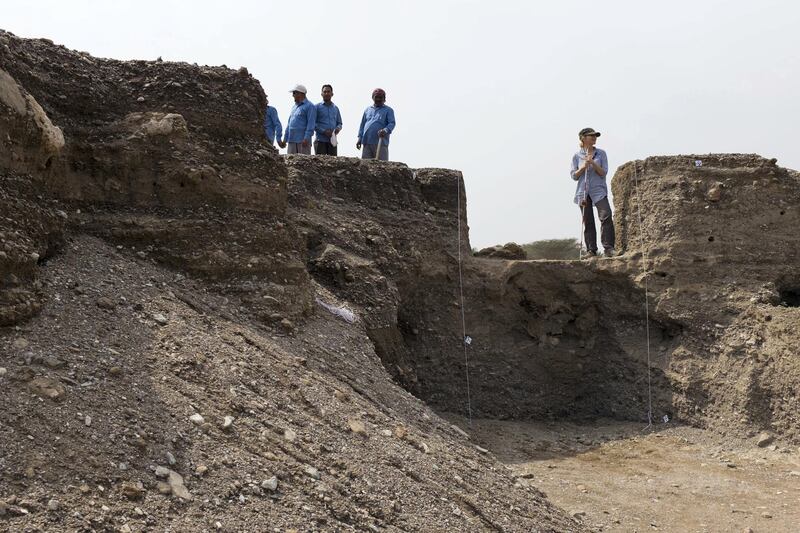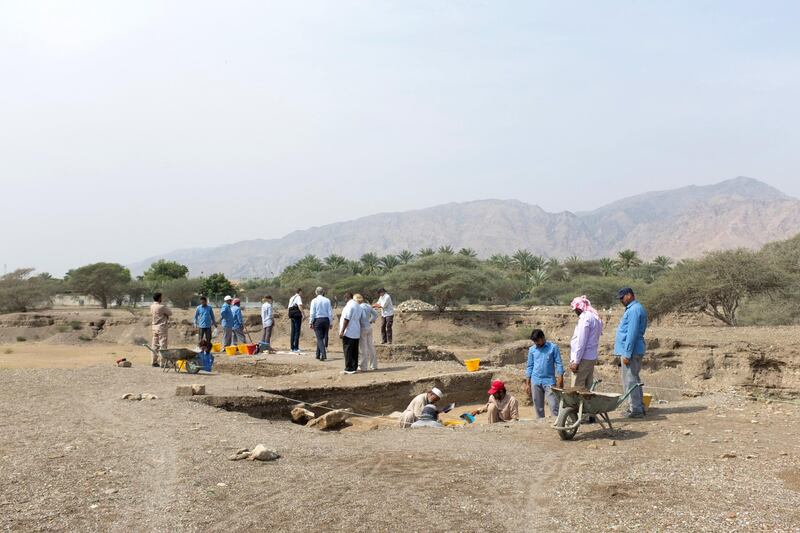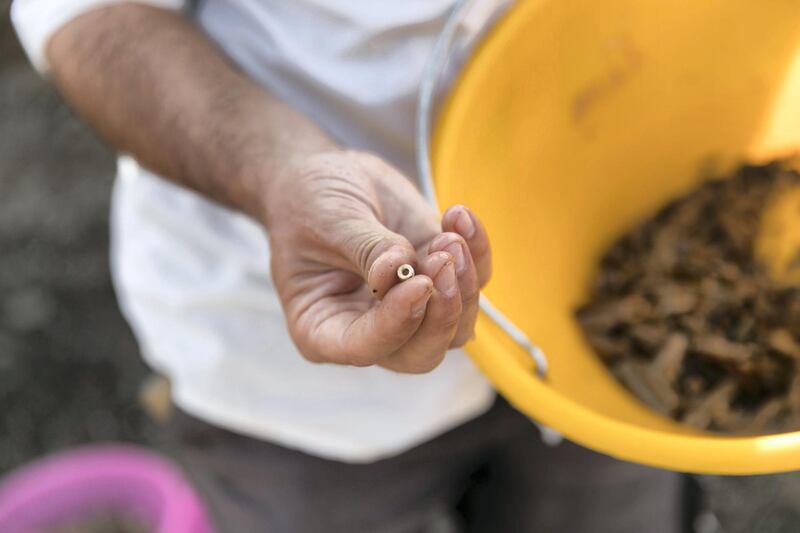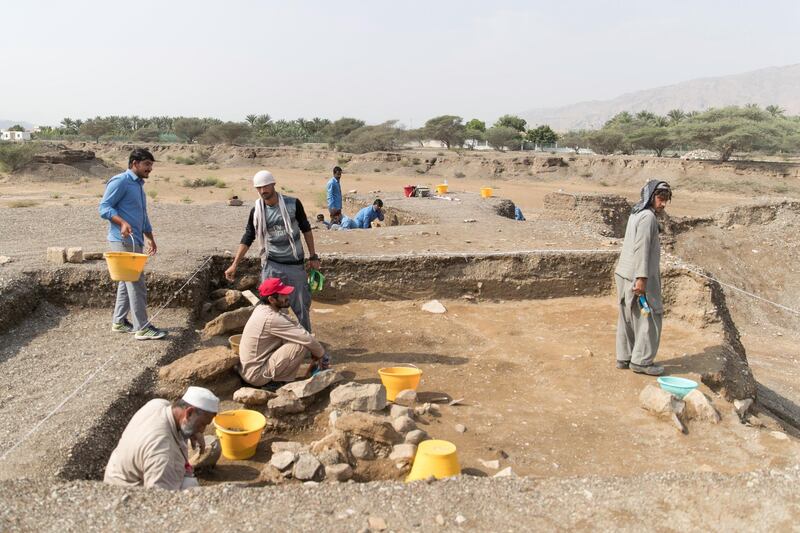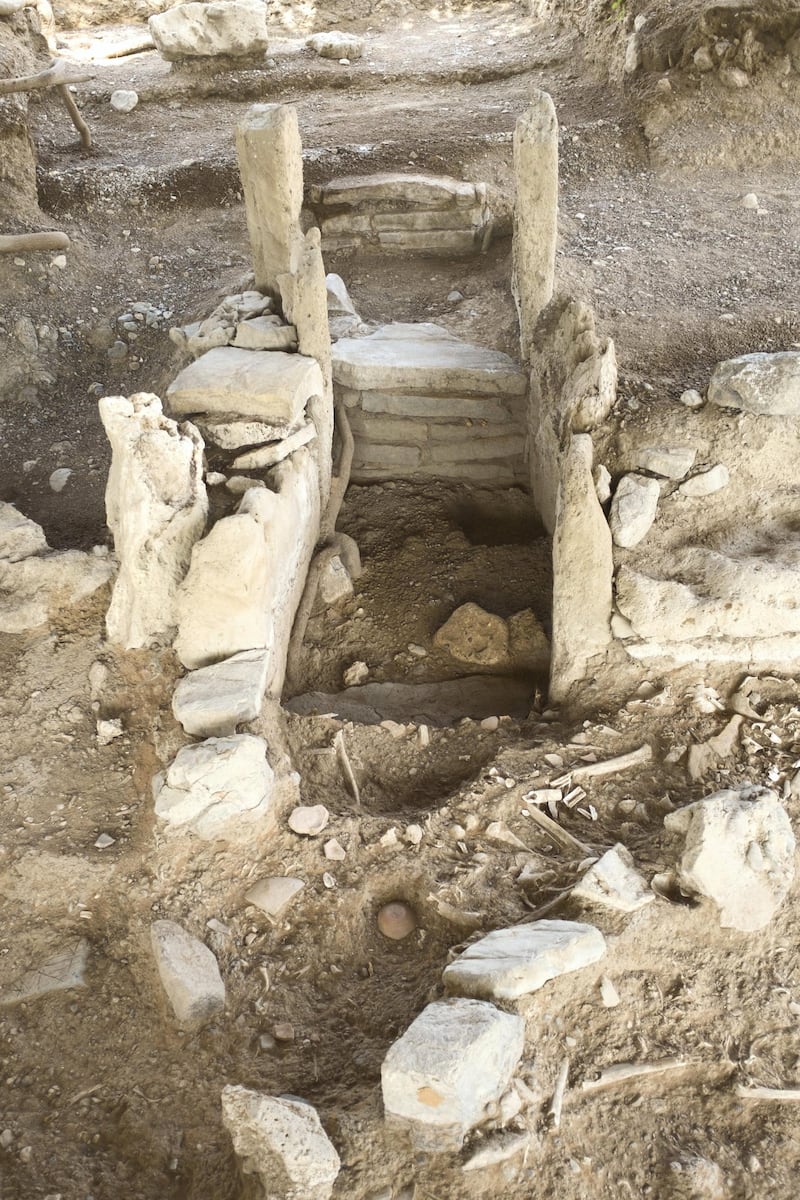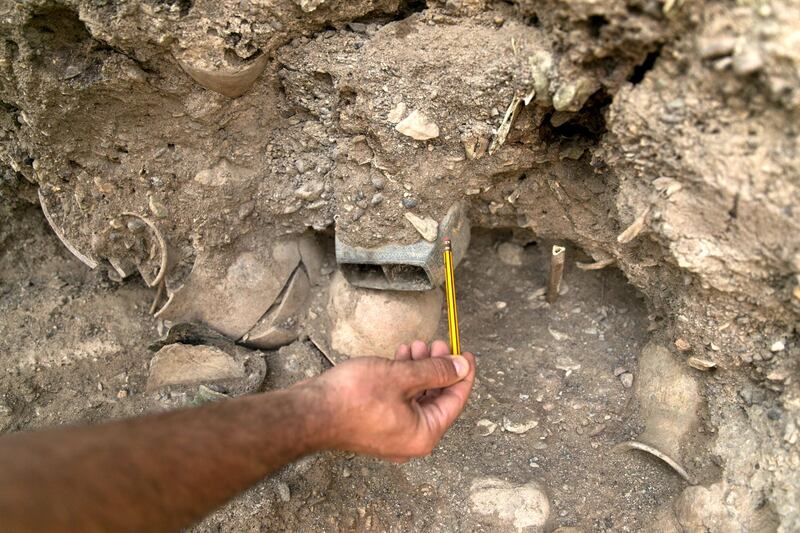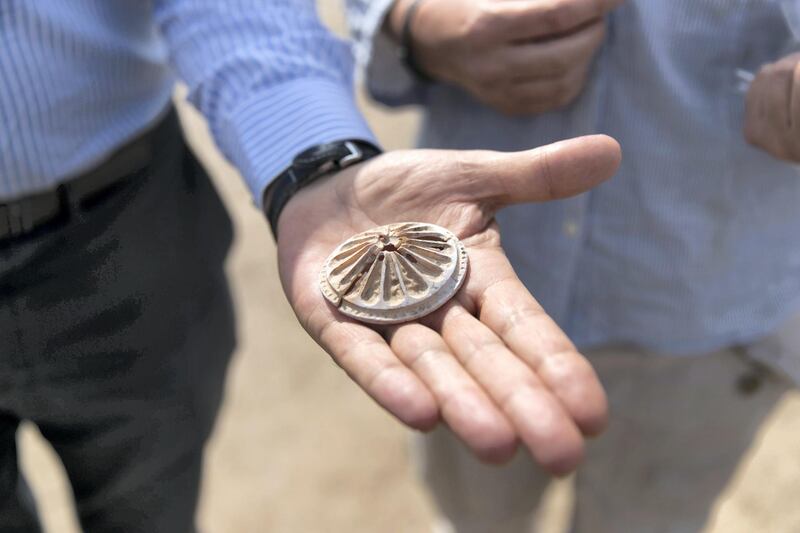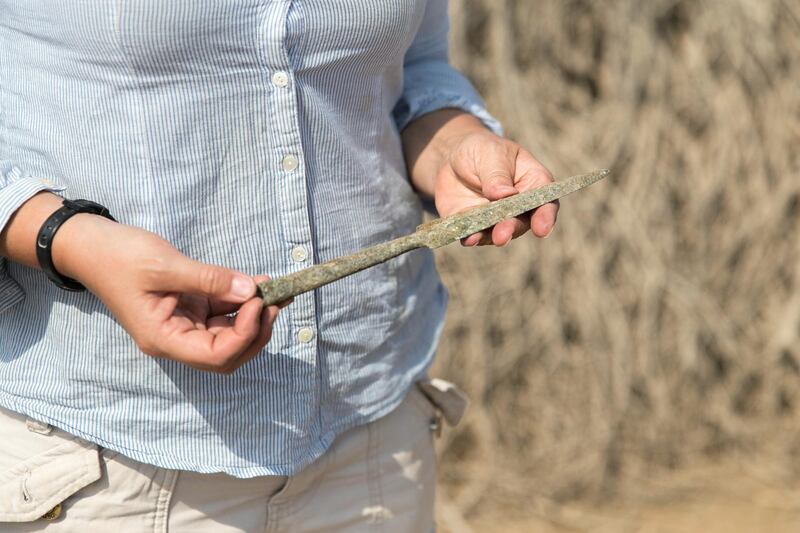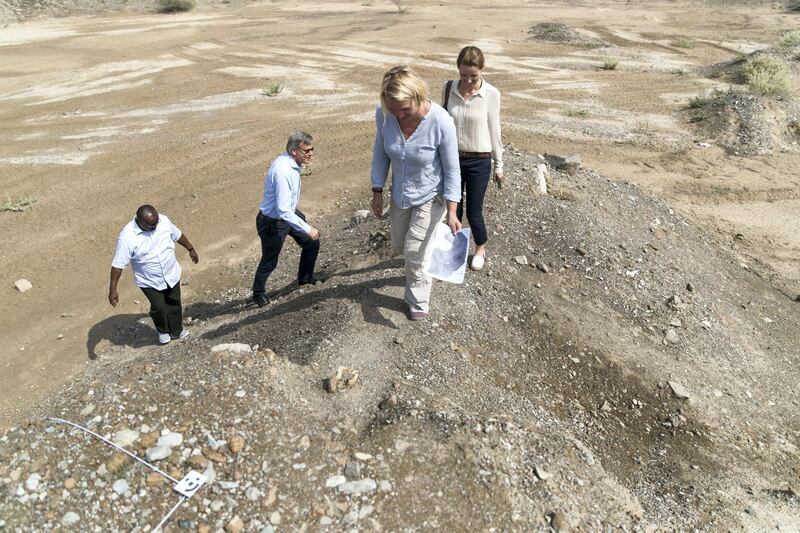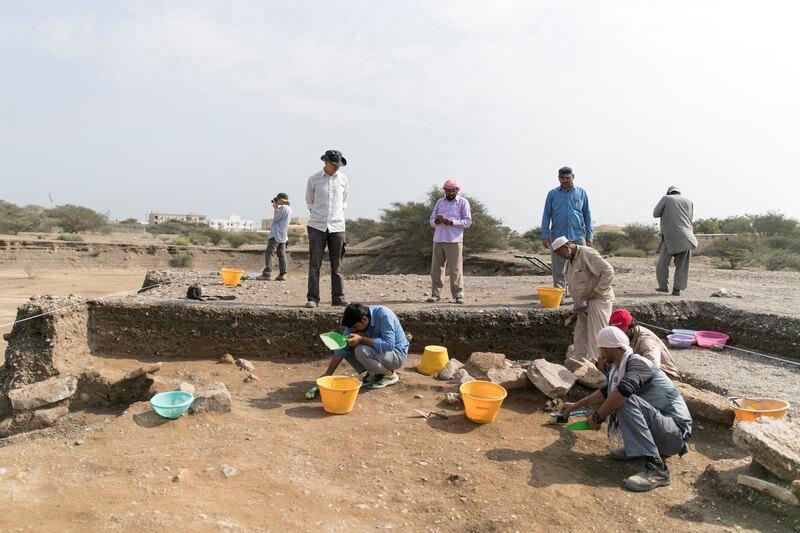Weapons, pottery and jewellery are just some of the rare Bronze Age discoveries unearthed by archaeologists at an ancient burial ground in Dibba.
Over the past two weeks, a treasure trove of more than 500 artefacts have been found at a Bronze Age site in Fujairah including swords, daggers, axe heads, arrowheads, spearheads, pottery and gold jewellery.
Two U-shaped tombs from as early as 1500BC are being excavated with more than a hundred people thought to have been buried in each.
It has been a good week for German archaeologist Kristina Pfeiffer, who is working on the dig in partnership with the Fujairah Tourism and Antiquities Authority.
“It is a lot more than we expected, we are drowning in finds,” she said.
“I just told my mom I’ve excavated the first sword of my life.”
On Thursday, The National was given a tour of two sites in Dibba being excavated by German archaeologists. Also present was the German ambassador to the UAE, Gotz Lingenthal.
Dibba Murabah is where Ms Pfeiffer excavated the sword. A second site, Dibba 76, was excavated by the team last year. Both are burial grounds from the Bronze Age and early Iron Age.
Four sites in total have been looked at in total since then and work is being led by the Orient Department of the prestigious German Archaeological Institute.
The focus this season is Dibba Murabah. In the late 1990s, a municipality bulldozer removing soil cut into a cluster of pottery fragments. But what the digger had stumbled upon was actually a treasure trove from a network of Bronze Age burial chambers.
These sites have been looked at before but the German teams are going deeper, finding more pieces, mapping the area and carrying out scientific analysis using state of the art methods. Thousands of bone fragments have been found over the past few weeks at Dibba Murabah.
“It’s not possible to determine where people lived at this time – but we do know where they are buried,” said Ms Pfeiffer, who is the project manager for the mission.
“[These sites] occur like a chain on the coast, from Fujairah down to Oman and that’s a phenomenon not explained yet because the settlements are missing.”
The arrowheads are still sharp and some have unique markings in the shape of lines, stars or a cross which could indicate the producer or type of arrowhead.
“The people from the Bronze Age are normally underestimated,” said Ms Pfeiffer. “They were like you and me and looked like you and me. They were highly sophisticated manufacturers.
“They knew how to cast, smith, how to make fine pottery and decorations. They were highly specialist people.”
_______________
Read more:
[ Ancient burial site found during Fujairah mosque construction ]
[ Remains of Bronze Age settlement open to public for first time ]
_________________
The team is here for a month until March 14 and they are working 18-hour days, supported by specially-trained workers from the Fujairah antiquities authority. The site is uncovered using picks and trowels and then finely cleaned using paintbrushes.
Ms Pfeiffer is supported by a team including pottery expert Mechthild Ladurner and surveyor Silvio Reichmuth. Every single piece must be photographed, weighed, measured, sketched and entered into a database.
Much of this work is done in the apartments they are staying in here. Photogrammetry is used to make a 3D picture of the site while C14 radio carbon dating determines what time in history the pieces were made.
One of the key questions is where these people got their drinking water. Using oxygen isotope testing of teeth found at the site and drinking water from Fujairah, they might be able to deduce where the drinking water came from.
At both sites, there was no separation of people in the burial chambers. Old and young; men and women were buried together.
“This is a fascinating part of pre-historic Fujairah culture that I really like. No separation. I would say in world archaeology, it’s unusual,” said Ms Pfeiffer.
Fujairah is undergoing rapid economic change, with a huge increase in construction putting these sites under pressure.
“Fujairah cares about culture a lot. The cultural heritage is very rich in the emirates, especially in Fujairah.
“But the amount of knowledge [we have] is very little. Proper work started only at the end of the 1980s. We have many questions.”
A protective roof was placed over Dibba 76 a few years ago and it’s hoped the site will open to tourists in the future.
“We’ll prepare some sites for visitors,” said Salah Hassan, head archaeologist at the Fujairah Tourism and Antiquities Authority. “We are very happy with the work right now.”
The German ambassador said he was impressed by the good atmosphere between the German archaeologists and the authorities in Fujairah.
“For me, it’s interesting to see the cultural heritage of this region,” said Mr Lingenthal. “I am also impressed by what modern technology can do to help analyse the sites.”
The German team will return in the autumn to process the finds. Results will be published in the months after.
